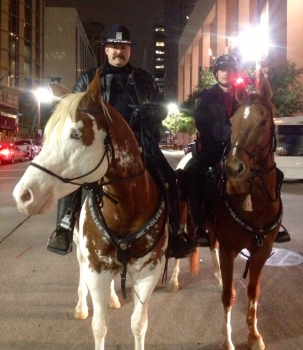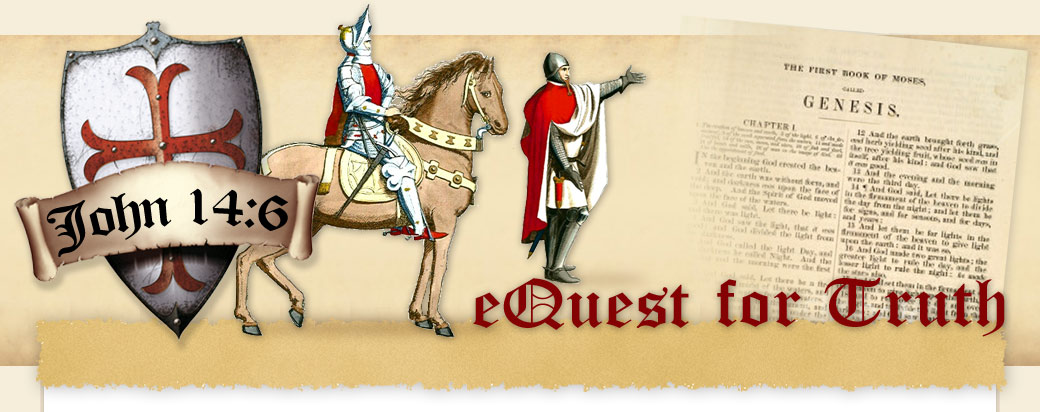The Hoof Print
Horse News. Christian Living. Equine Education
The Christian Equestrian's Literary "Stamp" in Type
Horses in History
- Subscribe via RSS
- 4 posts in this category

Two new articles by Rebekah L. Holt were recently featured by the American Paint Horse Association's publications.
"Painted Antiquity"
Chrome Magazine's Spring 2016 Issue - Click here to read PDF
This article overviews pinto colored horses depicted in historical art from the 18th dynasty in Egypt to the 1700s. It's a fascinating, full color celebration of the coat color pattern. Did you know that Napoleon rode a pinto? How about the Grand Marshal of France? Fun history lesson.
Here's one of the features that didn't make the final published copy (excerpt from the original article):

Portrait of a Piebald Horse from the Stud at Eisgrub Performing the Levade (1700)
Artist: Johann Georg von Hamilton (1672-1737)
In the 1700s, the Eisgrub stud in Liechtenstein was famous throughout Europe for their carriage horses. They were "high-stepping animals" of "imposing appearance, with beautiful long manes and tails and handsome Roman noses." Liechtenstien's Prince Johann Adam Andreas I commissioned artist Johann Georg von Hamilton for six equine portraits to hang in a newly constructed stable whose beauty was equivalent to the palace. Portraits of this kind were actual images of individual horses. "The high regard in which horses were held in the Baroque Age was evident not only in their ceremonial ranking...but also in the custom of having their portraits painted. " The "piebald" in this picture is boldly a black tovero stallion. He was one of the chosen six stallions for Hamilton's royal commission.
"On the Job"
Paint Horse Journal's May 2016 Issue - Click here to read PDF
Read about eight American Paint Horses and their everyday jobs in the workforce:
- Houston Police Department's Mounted Patrol horse, "Smash" - Visit Smash's own Facebook Page!
- Wings of Hope Equitherapy's "Doodles" and Hank" - Therapy Partners - Visit Wings of Hope
- Wyoming's Livingstone Outfitting Pack and Saddle horses, "Cedar" and "Diago" (pictured above) - Visit Livingstone Outfitting
- California Search and Rescue teammate, "Tuxie" - Visit the San Mateo County Sherriff's Office Mounted Search and Rescue Unit website
- Remington Park's Outriders "Jamonji" and "Cowboy" -
 "Tuxie" Photo by Sue Winslow Photography - Used by Permission
"Tuxie" Photo by Sue Winslow Photography - Used by Permission
The headline, "48 Million Year Old Pregnant Horse Found" (DISCOVER ENEWS, 10/7/15) caught my eye. A new fossil discovery in Messel, Germany.
Red Flag! Is it really a horse misdated by evolutionary dating processes or is it a critter that's been conveniently plopped into the equidae family by human reasoning based on a theory?
Reading the article revealed, "Eurohippus messelensis was only first described in 2006. The now-extinct species was smaller than today’s horses, being only about the size of a fox terrier, and had toes: four on its front “feet” and three on its back ones." Inaddtion, even after 48 million years, there remains soft tissue (according to the article).
I asked Joe Taylor, Founder and Curator of the Mt. Blanco Fossil Museum to share his thoughts for eQuest For Truth:
I figured it was Messel Germany when it said it was in tact. Small horses as well as monkeys and other animals have been found in these shales. If this is Eohippus, I’m not convinced they were horses. They are like the Green River formation in the US. The animals there are essentially modern animals which makes me think both Green River and Messel animals were buried after the Flood of Noah. Some of the horses still have hair on them and grape seeds inn their stomachs.
It is probably correct that these oil shales were affected by continual oil and gas seepage up through the sediments and possibly, occasionally, a large gas bubble erupted killing any animals foraging there.
This excellent fossils does nothing to help the theory of evolution. In fact, I believe the other horses found there are indeed true horses. They were small, like miniature horses and apparently lived at the same time as the supposed Eohippus. I do not like the term “Eo” anything. It implies evolution or proto animals that evolved into higher forms baloney for which there is no evidence.
Joe Taylor
A look into the fossils of where horses that have always been horses are found is a great article topic. We need some young or beyond writers interested in Paleotology to step up and write such an article for eQuest For Truth.
For More Information about the Horse Evolution and a Biblical evaluation of the theory, visit these articles:
The Non Evolution Of The Horse
Horse Evolution: Fact or Horse Manure?
Molecules To Mare Evolution-Is it True???
What About Horse Toe Evolution?
A Horse is a Horse, of Course, of Course...
The Bible and Evolution in Conflict

New Article on Discover Equus!
Every year on our calendar is marked a day when the most venerated figure in American history was born: George Washington. "The Father of Our Country" was born February 22, 1732, a true native to Virginia. Yet, did you know that among the many titles that are attributed to this fascinating American leader includes "The Father of the American Mule"? Did you know that he was an importer of a rare breed of Spanish donkeys that were so valuable that only by the King of Spain's permission could such an exportation be granted? Did you know that his favorite wartime horse was named "Nelson?"

Read for yourself a fascinating history: "George Washington: The All American Equestrian" on Discover Equus!

Head study of Warrior by Alfred Munnings (Public domain)
Moreuil Wood near Amiens, France, 30 March 1918. Warrior is pretending to be brave. He quivers under his rider in short bursts, his neat, black-edged ears pricked forward. General Jack Seely runs a stained hand down the gelding’s sweat-stiff bay coat, feeling the jump and shudder of the big neck muscles. In response, the horse slashes at the ground with a forefoot and snorts. The gesture is a challenge, and it gives the General the stab of courage he needs to make up his mind.
He turns to his troops with a rallying smile. “Charge!”
The gelding knows what the words mean; he rises briefly on his hindlegs, slender legs striking out. The men of the Canadian Corps cheer at their mascot, their symbol, their inspiration – the horse the Germans can’t kill. He has pretended to be brave for almost four brutal years now, filled with gunfire and bloodshed, and he makes the men hope that the Germans can’t kill them, either.
The General knows that that cannot be true; he has seen the Germans kill far too many young men already. But he knows that there is only one way to win this decisive battle, and it’s a risk he has to take. He claps his heels into Warrior and the thoroughbred plunges forward like a bullet from a Webley revolver. The men of the Canadian Corps bellow and 1400 horses sweep over the open ground, hooves splattering in the mud and chaos of the battlefield. Machine guns roar all around them, the thin wail of bullets filling the air. The General forces himself to ignore the screams of wounded men and horses that drop out of the ranks as they gallop on; he locks his gaze between Warrior’s ears towards their target – the enemy-infested woods. The gelding does not hesitate. He pushes out his nose, snaps out his legs and accelerates. All at once the woods are upon them and Warrior flings himself through the bushes and into the shadows, into one more battle, kicking and snorting and sweating and plunging, pretending to be brave…

Isle of Wight, 30 March 1922. The roaring sound of many voices falls deafeningly on the General’s ears, but this time there are no screams of pain, no shrieks of desperation. This crowd is cheering, wild with excitement, whooping encouragement to the field of horses tearing down the track towards the finish line. A mass of flashing coats and churning muscles, the horses throw themselves over the steeplechase fences as they thunder down the last stretch. And in the lead runs a powerful little bay gelding, who leaps the fences with an unmatched fearlessness. The other, younger horses sprint to catch up, their jockeys yelling encouragement; but the little bay remains utterly undaunted. He flounces over the finish line in an easy first, tossing his head until his black forelock is flung back from his little white star.
The delighted crowd nearly carries the General into the winner’s circle towards his horse, who is draped with flowers. The General wears a small smile; he walks quietly up to the gelding, reaches out a hand, lays his palm against the smooth brown cheek. Warrior turns his head to look at his owner, and pride swells in the General’s throat and prickles at the back of his eyes. It has been four years to the day since the desperate charge at Moreuil Wood that saved Amiens and was essential for the Allied victory. Almost half the horses and many of the men died in that charge, but here was Warrior; now fourteen years old and bursting with life and health, as evidenced by winning this point-to-point. The Germans couldn’t kill him after all.
Indeed, they could not. Having survived countless battles, being trapped several times under the burning beams of bombed-out stables, and dug out of the nightmarish mud at Passchendaele, Warrior returned safely to the island of his birth once the war was over. He and his owner and breeder, John Edward Bernard Seely 1st Baron Mottistone – known as “General Jack” or “Galloper Jack” in the war – remained inseparable until Warrior was eventually put down in 1941 at the grand age of 33. He had become a celebrity in Britain after the publication of the General’s account of his experiences, entitled My Horse Warrior and later Warrior: The Amazing Story of a Real War Horse. He has become even more of a celebrity 100 years after the beginning of his service in the war, having been posthumously awarded the PDSA Dickin Medal. This medal is known as the “Victoria Cross for animals”, and has been rewarded to only three other horses: the valiant police horses Olga, Regal and Upstart.
Warrior could not understand what the war meant or what he meant to the men around him; all he knew was to do what his rider asked, and he was one of the great horses that would do it with all of his considerable heart. But to the men of the Canadian Corps he was more than a horse. He was a symbol of the hope that they would survive the brutal, bloody, muddy tragedy that was World War I.
God used Warrior to inspire the men that served in the Corps. He is an example of how God can shine a light into even the darkest and most desperate times of our broken, fallen world, and how He can use anything for His purposes. If God can use a small bay horse to inspire an army and later a nation, how mightily He can use each one of us!
Glory to the King.

 Queen Mary With Warrior And his rider Jack Seely At Mottistone During Cowes Week, 1934
Queen Mary With Warrior And his rider Jack Seely At Mottistone During Cowes Week, 1934




